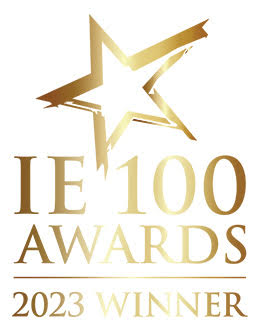
Running from cyberwars to a radically different session on
the Asian economies in the plenary room.
The session had the grand title: How seismic is this shift? A discussion about the implications of
emerging growth markets, and was chaired by Dominic Hobson (or Doominic as
he’s now named) of Global Custodian magazine with three key guys:
- Nobuyuki Hirano, President, Bank of Tokyo
Mitsubishi UFJ - KV Kamath, Chairman, ICICI Bank Ltd
- Simon Tay, Chairman , Singapore Institute of
Intern. Affairs
Again, here are the highlights for me, and not quotes but
summation.

KV Kamath: Asia will
represent half of global GDP in the next few years and this will see emerging
countries become supporters for other yet-to-emerge countries. As growth sustains, markets will become
linked with demand for money and products strongest in Asia for the next 20 to 30
years. Thereafter you will see the same
transformation across Africa. It will be an exciting time for the next 20 to 30
years.
Simon Tay: it’s
not so much a shift of trade to Asia, but a shift of expectation. There are challenges, but if you look at Asia
as an economy, there a lot of assets and attention coming to our region because
of that expectation. Now, most of the
time, we talk about Giant China and Giant India, and we will see the Rupee
become a major currency soon, alongside the Renminbi, and the financial ties between
China and the rest of Asia will also grow.
But Asia is more than this. Asia
has ten countries that are not as strong as one big country, but they are
important too. There is Singapore, Viet Nam, Indonesia, Myanmar, Malaysia and
more. These are markets with many
millions of people and they have resources, demands and assets that will also
be bankable. By collaborating through
the ASEAN Economic Community http://www.aseansec.org/index
, the South and South East Asia will become one of the pillars, along with
China and India.
Dominic: Hirano-san,
what can the ASEAN community learn from Japan’s experiences.
Nobuyuki Hirano: we
feel some pain and regret in responding to this question, but the big lesson is
that we have an aging population challenge.
Over 40% of our people will be over 65 soon and rapid aging will damage
Japan’s social system, as well as our productivity and growth. Increasing public spending and social
security expenses are a big challenge and, historically, we have been fiscally
incontinent. Government spending in
Japan is the highest of any Asian economy, and this has resulted in major issues
for our economy and economic system. Now
this is being addressed with a
meaningful step of increasing. This is
not just a lesson we can share with ASEAN countries, as aging populations and
fiscal reform are global issues, not just Japan’s issues. Some emerging economies are already seeing
aging populations, even before their income achieves the levels of developed
economies like Japan’s. So the lesson is
around how to manage and organise the social systems, and reforms should be
made before the problem emerges, not when it is in full flow. Another lesson we are learning is that, in the
past, many Japanese companies have had international capabilities backed by Japanese
innovation and technology, but some have lost their positions today. This is also not unique to Japan, as it has
been seen in other global economies. But
Japan still maintains a massive advantage in human resources, infrastructure,
logistics and products. The key now is
to create and invest in the next generation growth industries to replace our
legacy industries, and encouraging the flow into investment by offering near to
zero interest rates on savings. If Japan
achieves this change it will be a valuable lesson for all.
Dominic: KV, where do you see the next generation of growth in this region?
KV Kamath: the opportunity is around expansion in the ASEAN region below the Singapore level, which will see huge growth as there is a massive demand for infrastructure. The aspirational growth driven by the needs of this region will be an opportunity. The next generation of consumers and today’s youth will have needs, and serving those needs will require infrastructure and capital. Just in India for example, there are around 600 million people who are unbanked in 600,000 villages. That is an opportunity. It’s a huge challenge to serve those people, but also a huge opportunity to bank the unbanked. The same will be true across ASEAN and China markets. Lending against infrastructure developments and servicing the new consumer demands will be the big drivers of change and opportunity in this region for the future.

Simon Tay: I
agree, and the people best suited to take this opportunity are the Japanese and
Chinese banks, as they can take a long-term view with low interest rates. The Western banks can try to get into these markets,
but do they have the long-term view? Western
banks might focus more on the aspirational consumer, as professionals and new
consumers in this region respect the brand names from the West and look to
those brands to serve their needs. That
may change, but Singaporeans want a Singapore Bank or a Western Bank. This is where the Western banks maybe have
the biggest opportunity. The banks that
can get the reach and cost lower, and then facilitate payments, will be those
that get rewards.
Dominic: Can the
political systems keep up with economic growth, for example can China’s government
keep up?
Simon Tay: keeping
up the growth is a problem, as are social iniquities. This is much more on the table now than ever
before, not just in China but India and elsewhere. The disparities are too clear. And the bigger
issue of dealing with growth is dealing with a crash. Japan and Britain have done a great job of
dealing with this, and Asian countries are not ready for this but they should
be. They are riding a wave and the concern
for the political system will be when the wave crashes. This is why Japanese banks have a great opportunity as they are very trusted. Japanese banks have been in this region for a
long time, and there is an assurance about how they approach things
therefore. As Japanese companies go out
and seek projects across Asia, it makes sense for Japanese banks to follow
them. This opportunity should not be
underestimated.
Nobuyuki Hirano: there
is a challenge with this, as there
are multiple supply chains that are like a spider’s web from regional to domestic
supply chains. Within these it’s not
just Japanese multinational firms that are in this chain but SMEs too, and
understanding these links between countries and companies are where the banks
can seek leverage. As Simon says, we
have a good relationships because of our
long history in the region and we cannot just work with Japanese firms, but all
Asian firms and countries.
Dominic: how do you
see growth in India KV?
KV Kamath: the
big growth opportunity in India for the past few years has been the
consumer. This has been led by credit
card and loan financing, which is a recent phenomenon. The next big domestic opportunity is banking
the unbanked, as I said before. This is
the centrepiece of our going forward strategy – inclusive growth. We need to touch the whole population, not
just the wealthy, and that is where we see the big opportunity for the next
decade. The challenge of inclusive
growth is reach and cost. The ability to
reach and bank 600 million unbanked people means that we are looking at a new
banking correspondent model. The idea is
to have agents in the 600,000 villages.
You then have technology to support them, using mobile devices for
example. The cost of this is a quarter
of what it was just two years ago and, last year, the growth of the people
connected to the internet using a mobile increased 850% in India. That represented a 50% increase in overall internet
usage in India. So you can now take
technology down to the masses at a fraction of the cost you used to, and this
will be key for all markets, not just India. Just five years ago, you could not
have done this but today, you can.
Technology is driving emerging Asia and the emerging world to new
frontiers and new banking.
Dominic: What are
the regulatory implications of these markets and growth opportunities?
Nobuyuki Hirano: Japanese
banks are well capitalised and structured, which is why we have no concerns about
the implementation of Basel III, but
that should not give the impression that Asian banks are robust from a crash
due to the current sluggish environment, along with issues that exist as risks
from demographic change and fiscal incompetence as discussed before. But the real issue is the risk of a one size fits all regulation.
Unintentionally this may destabilise the financial system. Regulators must strive to create principles-based
frameworks that allow implementation to match each country’s situation. There are rules in the UK and USA for
example, that may constrain financial firms from providing the money to the
real economy that is required globally or locally. We will be monitoring their
consequences very closely from now on which why we have created a regional grouping
of financial firms to have one voice to the global regulators.
Simon Tay: the regulatory
question is a critical one as we are struggling to find the right framework for
an Asian regulatory system. Maybe there
is not one, but the danger is that we end up importing the wrong one as the medicine
being applied to the Western banks might make us choke. The real question is whether the economic
system integrated globally or whether it is decoupled, and that should
determine where we need the financial system to have global regulations versus
local.

Chris M Skinner
Chris Skinner is best known as an independent commentator on the financial markets through his blog, TheFinanser.com, as author of the bestselling book Digital Bank, and Chair of the European networking forum the Financial Services Club. He has been voted one of the most influential people in banking by The Financial Brand (as well as one of the best blogs), a FinTech Titan (Next Bank), one of the Fintech Leaders you need to follow (City AM, Deluxe and Jax Finance), as well as one of the Top 40 most influential people in financial technology by the Wall Street Journal's Financial News. To learn more click here...




















